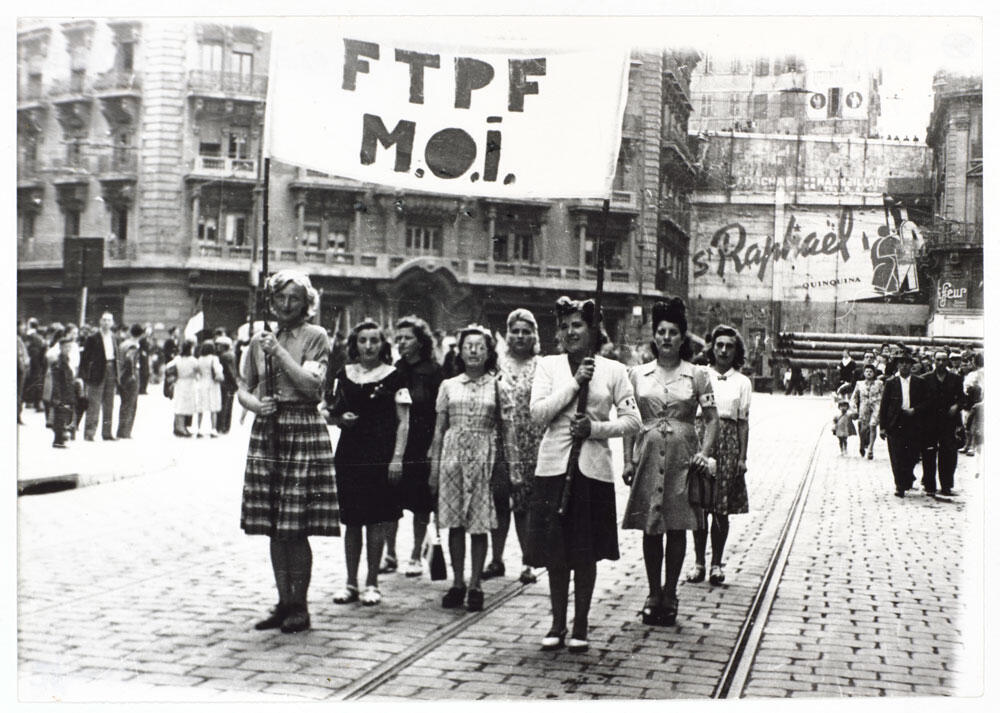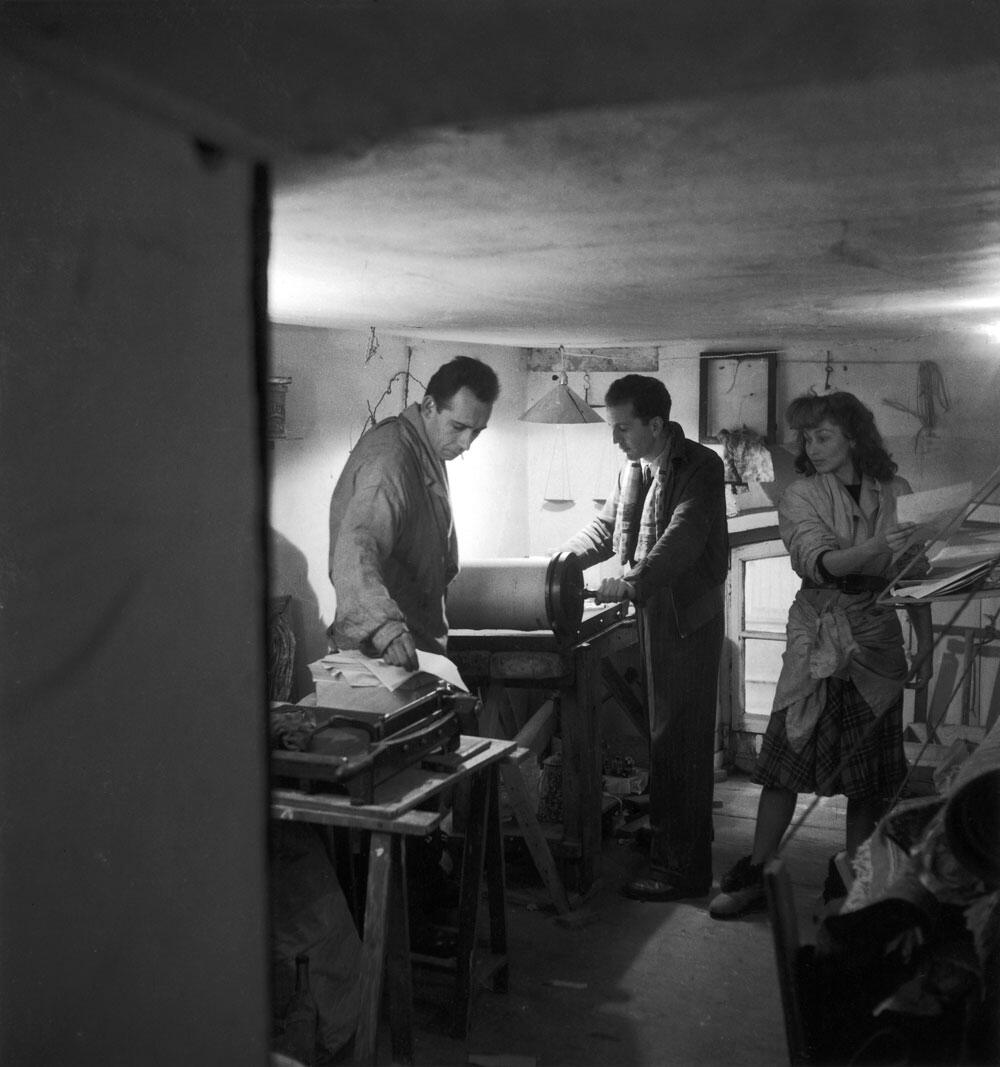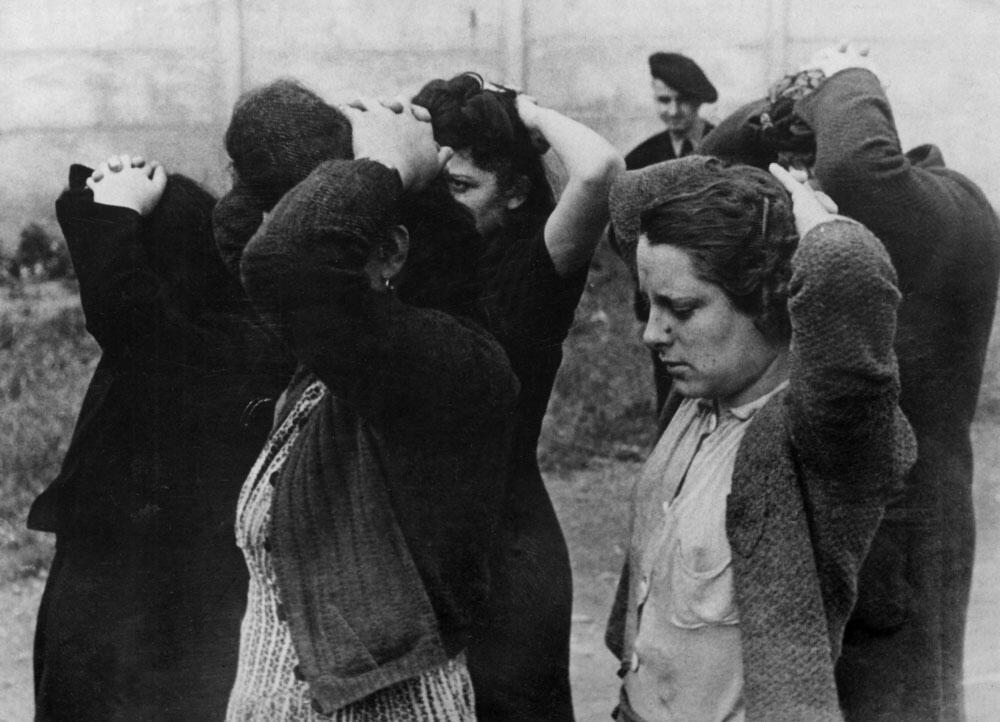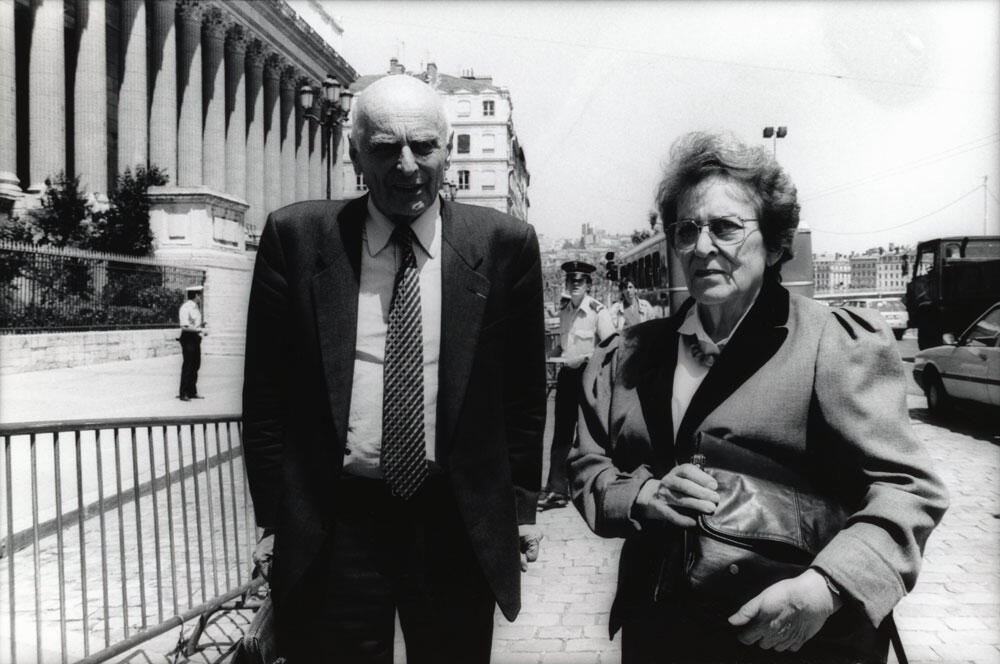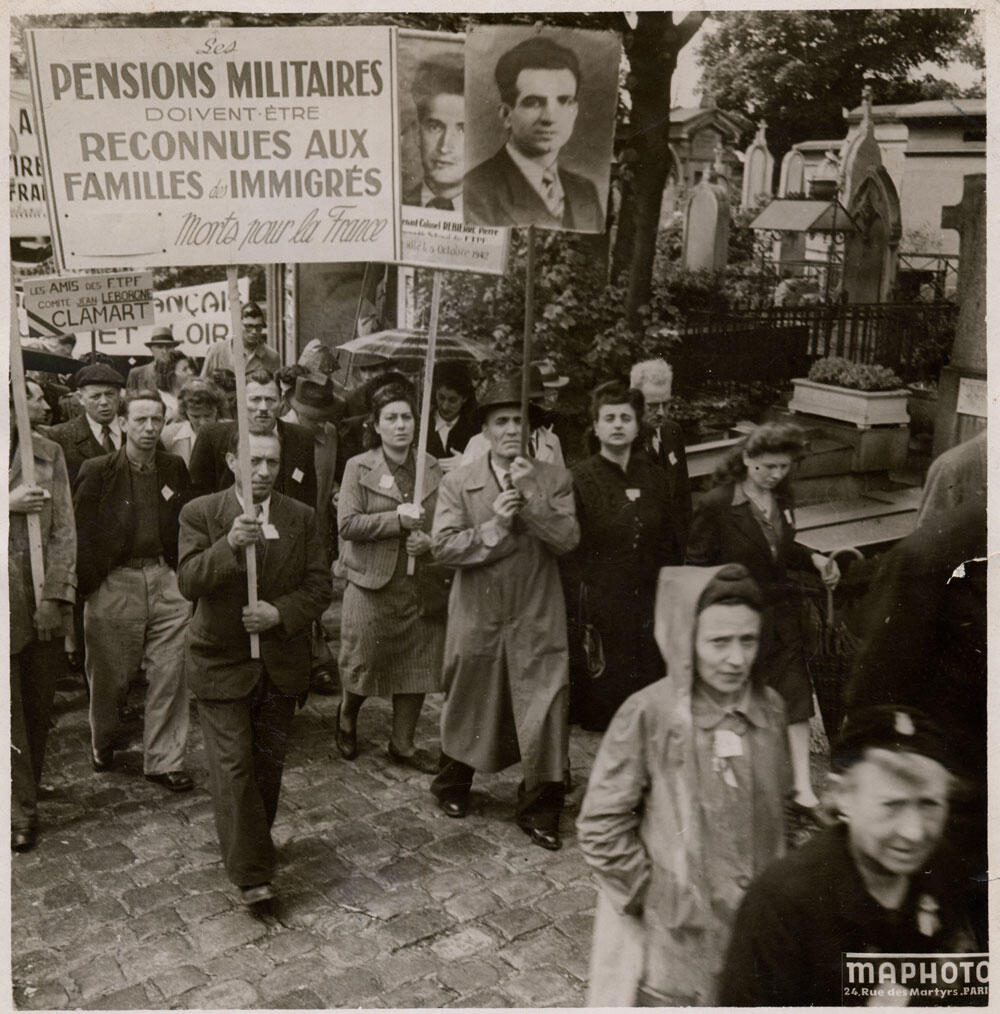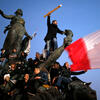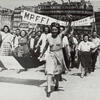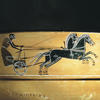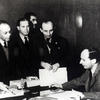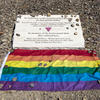You are here
The silent heroins of World War II

We hear very little about the women in the Resistance. Why are they kept so much in the background?
Denis Peschanski1: For at least three reasons. First and foremost because of their status in society – even more so at the time than today, of course. Secondly, in terms of the armed struggle, the women did not usually use firearms. Since they could go unnoticed, they would transport weapons to the scene of an attack, hiding them in a shopping bag or a pushchair, but it was the men who did the shooting. There are of course exceptions, but generally this was the rule. And nonetheless, the women also risked their lives doing it. Lastly, the third reason is that before the war women still did not have the right to vote. As a result, they were less involved in political life than men and had little presence in the parties. Political engagement was a man’s business. Women did not gain the right to vote until April 1944, in fact partly due to their participation in the Resistance.
When did people start talking about the role of women in the Resistance?
D. P.: With regard to collective memory, and especially when it comes to World War II, I like to say that there is no specific moment when a single narrative emerges, but rather a coexistence of several 'strong' and 'weak' memories. Concerning the war, we have seen the emergence of various figures in alternation: the Resistance fighter, the spineless Frenchman or collaborator, the Jewish victim, the Vichy regime… But none of these has ever been completely eclipsed.
As for women, the importance of their role was never fully taken into account until the scientific community began to investigate the so-called ‘rescue’ resistance, removed from the armed struggle. Which did not prevent figures such as Germaine Tillion, Lucie Aubrac, Marie-Claude Vaillant-Couturier and Geneviève de Gaulle-Anthonioz from being present over the years. But when we began to take an interest in les Justes ("the Righteous"), the people who took action to save the Jews, we realised that women had a very strong presence2. Many were acting in cooperation with other members of their families, but some initiated rescues themselves, operating entirely on their own.
In France, for example, they took action in the camps through organisations like the Swiss Red Cross, the Quakers and the Œuvre de Secours aux Enfants (children’s aid society), working both within and outside the law. As early as 1940, La Cimade3 was going into the camps to help the internees, operating legally. Soon these organisations took advantage of their ability to enter the detention centres in the southern zone to carry out illegal clandestine rescue operations. I could mention, among others, the role of Madeleine Barot, the secretary general of La Cimade, in the creation of accommodation facilities to get the internees out, thus saving them from death. Examples include Le Coteau Fleuri in Le Chambon-sur-Lignon (central France), the Marie Durand centre in Marseille (southeastern France) and the YMCA centre in Toulouse (southwestern France).

A recent book has highlighted the crucial role of women as ‘helpers’.
D. P.: Yes, the historian Claire Andrieu, in When Men Fell from the Sky , showed the importance of the rescue resistance of American and British airmen who crashed in France and survived, but then had to be taken to the Spanish border so they could get back to Britain. Until this book came out, the vital role that women played in this form of resistance was scarcely known. Andrieu estimates that there were about 34,000 helpers, one-third of them women. But this contribution had been forgotten, or downplayed, in the national memory, which still reserves its greatest esteem for armed struggle, whether in the cities or in rural areas.

The author emphasises the masculine character of the process recognising acts of resistance. All-male award panels, criteria focusing on military-type actions and female self-effacement have resulted in a false image of the Resistance, giving most of the glory to young childless men, to the detriment of women, children and family structures. But the accounts of the fugitive pilots testify to the crucial role played by women in their successful escape. If those airmen had not been rescued immediately after crashing and an escape route found for them, very few would have been able to keep fighting.
What can you tell us about the FTP-MOI and their role in the Resistance?
D. P.: The FTP-MOI were the internal units of the French communist Resistance founded in April 1942 to conduct urban guerrilla warfare in France against the Nazi occupiers. After the breakdown of the German-Soviet pact, the PCF (French Communist Party) turned to guerrilla warfare, and the first groups already demonstrated the important role of foreign combatants. The reorganisation took place on a national scale with the creation of the FTP, and in the Paris region through the FTP-MOI. The FTP-MOI units had a dual leadership hierarchy, military through the FTP, political through the MOI. The organiser of the Parisian structure, the Romanian Jew Boris Holban, set up several detachments based on the languages spoken by the foreign fighters: Italian, Romanian, etc. He added a group of railway saboteurs, and in June 1943 a 'special team' in charge of executions of high-ranking German officials. In addition to the actual combatants, there was also an intelligence service in charge of identifying targets, a medical service and a liaison group.

The numbers varied, but to take the example of the summer of 1943, there were fewer than 70 members in the entire Paris region. After a series of failures, the French groups were concentrated in the suburbs, while the FTP-MOI largely prevailed within the city of Paris. After an intense campaign, they were all identified, tracked, hunted down, arrested and tortured by the Paris police, specifically by the Renseignements Généraux special intelligence brigades, in keeping with the collaborationist policy of the French state under Pétain and Laval after the defeat. The French police proved to be more effective than the Gestapo would have been. German propaganda produced a red poster showing photos of ten of these foreign Resistance fighters and plastered it on walls across France, making them national heroes. All of them were executed on 21 February, 1944.
Were there women in the FTP-MOI units?
D. P.: Yes, even in these armed groups there were many women. This was especially the case among the leadership: the Bessarabian Jew Golda Bancic, known as 'Olga' or 'Pierrette', who had been imprisoned in Romania in the 1930s, was in charge of military supplies. Born in 1912 in the Moldovan city of Kishinev, she started working in a factory at the age of 12, became an activist in the Communist Party, and at 16 married Alexander Jar, a Jewish communist like herself. She was sentenced to two years in prison for her trade union and political activities, after which she took refuge in France. In 1938, on her way to help defend Republican Spain against the Francoists, she arrived in Paris with her husband. They had a daughter, Dolorès, who was taken in by a French family when Bancic joined the FTP-MOI. She organised the storage of weapons and explosives, their transport to the attack sites and their subsequent recovery so that the underground fighters wouldn’t be caught in their possession.



Another FTP-MOI leader, Cristina Boïco, known as 'Monique', was in charge of intelligence alongside the military leader Boris Holban and later Manouchian, who succeeded him in late July 1943. Like Bancic, she was also a Romanian Jew, born in Botosani in 1916 under the name Bianca Marcusohn. Refused entry to the Bucharest School of Medicine because she was Jewish and communist, she came to France in 1938 and joined the FTP-MOI in 1942.
Her division set objectives and scouted locations for various operations. One of her missions was to collect intelligence on prominent German figures. Boïco initiated one of the most far-reaching FTP-MOI operations in Paris: she spotted a high-ranking officer, at first without knowing his name and function, who turned out to be SS General Julius Ritter, in charge of requisitioning French workers for German industry through the Compulsory Work Service, or STO.
She tailed Ritter in order to know his movements, thus enabling his execution by the FTP-MOI on 28 September, 1943. Escaping the arrests of November 1943, in early 1944 she became the head of the FTP-MOI for the entire northern zone (occupied by the Germans since June 1940). These two women didn’t wage war with guns in their hands, but they risked their lives every day just like the men.
And what did the 'lower-ranking' agents do?
D. P.: Other women, like Madeleine Delers, known as 'Catherine', often worked as liaison officers. They conveyed messages, set up meetings and sometimes, in the event of an alert, had to get the word out in time to halt an operation. As in the other networks, it was women who hid, sheltered and fed the Resistance fighters. And they took considerable risks, whether or not they themselves were armed, not to mention those who were responsible for transporting weapons to the attack locations and recovering them afterwards.
The MOI had set up another very special division called the TA (Travail Allemand, or 'German Labour'). Wasn’t it also headed by a woman?
D. P.: Yes – the German Labour section was an intermediary detachment between political and military operations. It was formed in 1941 by Artur London (a Czech Jew and member of the International Brigades), with the mission of infiltrating German troops and demoralising them by conducting propaganda operations against the war and against Hitler. A Romanian woman, Irma Mico, organised a group of about 15 young German-speaking women in Paris. Of Czech, Hungarian, Romanian or Austrian origin, they were almost all Jewish and spoke fluent German. They strolled the streets of Paris and frequented the cafés to speak with German soldiers. They would identify those with anti-Nazi leanings and try to win over others, asking them to distribute leaflets and newspapers in German.
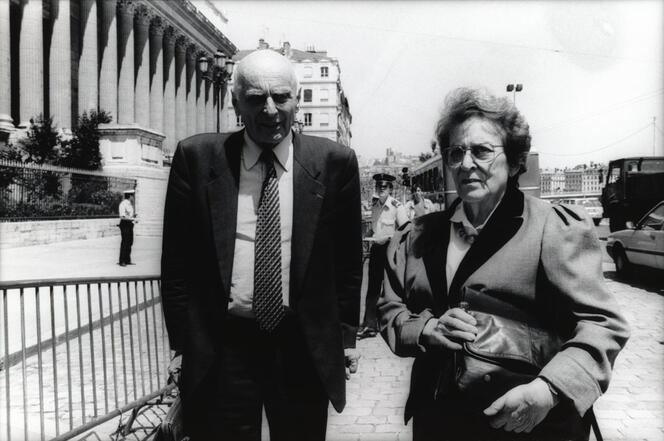
Dora Schaul, a German Jew, communist and Resistance fighter in France under the name Renée Fabre, testified much later about her operations in the provinces, recounting that they had also been instructed to try to get jobs working directly for the Germans, in either airbases, military postal sorting facilities or soldiers’ homes. Schaul ended up at the army post office in Lyon, which was in the same location as the Gestapo offices. The officers would give her their military service numbers when they asked her to check for mail. She was able to memorise the names and addresses of five German soldiers a day and pass them on to the organisation to use in destabilising operations. All of these women showed incredible courage – they were truly putting themselves in the lion’s den.
What happened to them? Were those who were arrested executed?
D. P.: Of the 69 members of the FTP-MOI arrested in November 1943, 22 men were executed by firing squad and most of the others were deported, half of whom were women4. The French public would not have accepted the execution of a woman. The women who were arrested were deported to camps or sent to Germany to be guillotined. That’s what happened to Golda Bancic: sentenced to death along with the 22 other FTP-MOI members, she was beheaded three months later in Stuttgart. Irène Wosikowski, a communist activist of German origin, was part of the TA section in Marseille. Indicted for high treason, undermining the morale of the army and aiding and abetting the enemy, she was also guillotined, in Berlin in October 1944. With the historian Thomas Fontaine, we are in the process of compiling a list of women Resistance fighters who were executed in Germany. But the project is only just starting.
These people were belatedly recognised as having ‘died for France’…
D. P.: When Missak Manouchian’s remains were enshrined in the Panthéon, I found out that NGOs had been demanding for decades that the foreigners shot at Mont-Valérien be recognised as having died for France. Of the 1,000 or so combatants executed there by the Germans, 185 were foreigners, 92 of whom had still not been granted that recognition in 2023! This was even the case for Szlama Grzywacz, one of the ten Resistance figures on the Red Poster. To think that Golda Bancic was not recognised as having died for France until 2011, nearly 70 years after she was guillotined! All of that because of a law passed in 1915 stating that only French citizens could receive this honour.

For World War I this wasn’t so much of a problem: it was a battle between regular armies and the foreign legionnaires were de facto assimilated into the French forces. World War II was a game changer: France had no real regular army and a great deal of foreigners.
After 1939-45, the administration decided on a case-by-case basis according to the context and public pressure. Manouchian himself was not granted this status until… 1971, even though he was already part of the collective memory by the end of the 1950s, thanks to the poets Louis Aragon and Léo Ferré. When you read the letters that all of the prisoners wrote before they died, almost all of which mention their devotion to France, it’s incredible… They finally obtained this status by presidential decree in June 2023. Fortunately, the question is beyond debate.
You were the historical advisor of the committee on Missak and Mélinée Manouchian’s candidacy for the Panthéon. What was the importance of this decision?
D. P.: We are now seeing a genuine revolution in commemoration. Missak Manouchian was the first foreign and first communist Resistance fighter to be honoured in this way, accompanied by Mélinée, by the other 22 sentenced to death in the Red Poster trial, and also by the head of the Parisian FTP, Joseph Epstein. It was time to highlight the essential role of the non-French Jews, Poles, Armenians, Spaniards and Italians who took up arms. At the ceremony at Mont-Valérien that day, the French President came down into the clearing in a gesture of memorial convergence, whereas every 18th June since the beginning of the Fifth Republic, the presidents have remained on the esplanade, celebrating 'Fighting France'. At the same time, the President’s action helped to resolve the anomaly regarding the attribution of the status 'Died for France'. ♦
For further viewing
The exhibition Vivre à en Mourir, Manouchian et ses Camarades de Résistance au Panthéon (“Live to death, Manouchian and his Resistance comrades at the Panthéon”), through 8 September, 2024 in the crypt of the Panthéon, Paris 75005.
Information and tickets(link is external)
For further listening
M.O.I, la Main-d'Œuvre Immigrée en Lutte, documentary series(link is external) (in French) in four episodes on France Culture radio.
For further reading
Missak Manouchian. Une Vie Héroïque(link is external) (“Missak Manouchian. A Heroic Life”), Didier Daenincks, Mako, Dominique Osuch, Les Arènes, January 2024, 120 p. (Graphic novel supplemented by an essay by Denis Peschanski on the decisive role of foreigners in the Resistance.)
Manouchian(link is external), Astrig Atamian, Claire Mouradian and Denis Peschanski, Textuel, “textual archives” coll., November 2023, 192 pages, 250 images.
When Men Fell from the Sky(link is external). Civilians and Downed Airmen in Second World War Europe, Claire Andrieu, Cambridge University Press, March 2023, 320 p.
- 1. A CNRS research professor emeritus at the Centre Européen de Sociologie et de Science Politique (CESSP – CNRS / EHESS / Université Panthéon Sorbonne), Denis Peschanski also chairs the Scientific and Orientation Board of Mission Libération, the group planning the commemorations for the 80th anniversary of D-Day and the liberation of France.
- 2. Just over half of Les Justes were women, according to the World Holocaust Remembrance Center.
- 3. Cimade: literally "Comité Inter-Mouvements Auprès Des Évacués" (inter-movement committee for evacuees), an acronym derived from its original mission to help the "evacuees" from Alsace-Lorraine (northeastern France) fleeing the Nazi advance.
- 4. Dimitri Manessis et Jean Vigreux. "Avec tous tes frères étrangers". From the MOE to the FTP-MOI, Libertalia, February 2024.


